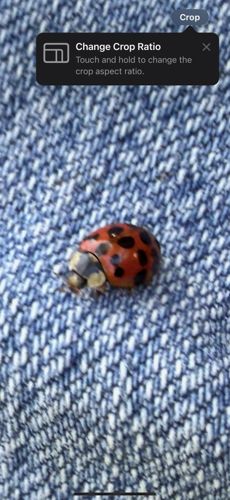Ladybug (or Ladybird beetle)
Scientific Name: Coccinellidae (various genera and species, e.g., Hippodamia convergens, Coccinella septempunctata)
Order & Family: Order: Coleoptera, Family: Coccinellidae
Size: Typically 1-10 mm (0.04-0.4 inches) in length, with most common species being around 4-7 mm.

Natural Habitat
Gardens, agricultural fields, meadows, forests, and other areas with abundant plant life and their prey. They are often found on leaves and stems of plants.
Diet & Feeding
Predominantly carnivorous, feeding on soft-bodied insects like aphids, scale insects, mealybugs, and mites. Some species also eat pollen, nectar, or fungi.
Behavior Patterns
Ladybugs undergo complete metamorphosis (egg, larva, pupa, adult). Adults are known for their distinctive dome-shaped bodies and often bright coloration. They are active during the day. Many species overwinter in large aggregations in sheltered locations.
Risks & Benefits
Highly beneficial insects, especially in agriculture and gardening, as biological control agents against plant pests. They pose no significant risks to humans, though some invasive species (e.g., Harmonia axyridis, the Asian lady beetle) can bite if they feel threatened and may overwinter indoors in large numbers, sometimes staining surfaces with their defensive fluid.
Identified on: 9/18/2025